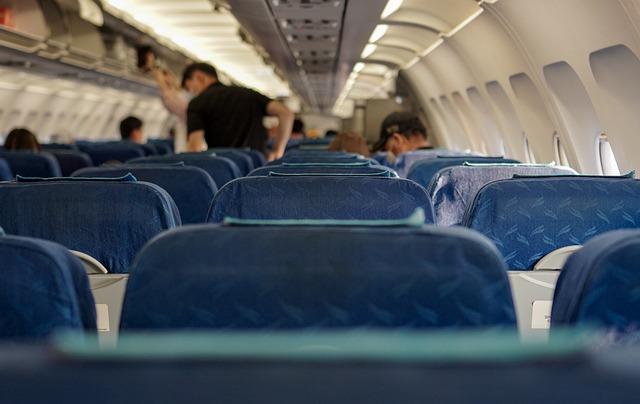Ohio State Medical Center at The Ohio State University Wexner Medical Center is emerging as a leading institution in the specialized care and rehabilitation of overhead throwing athletes. Renowned for its cutting-edge research and expert clinical teams, the center addresses the unique challenges faced by athletes engaged in sports such as baseball, volleyball, and tennis. Combining advanced diagnostic technology with individualized treatment plans, Ohio State is setting new standards in injury prevention and recovery, ensuring athletes return to peak performance safely and efficiently.
Overhead Throwing Injuries Among Athletes Insights from Ohio State Medical Experts
Athletes who engage in overhead throwing motions, such as pitchers, volleyball players, and javelin throwers, are particularly susceptible to a range of injuries affecting the shoulder and elbow. According to Ohio State Medical experts, repetitive stress and improper mechanics often lead to conditions like rotator cuff tears, labral injuries, and ulnar collateral ligament (UCL) sprains. Early diagnosis and tailored rehabilitation protocols are essential to prevent long-term damage and ensure a safe return to sport. Advanced diagnostic tools, including MRI and ultrasound, are routinely utilized at the Ohio State Wexner Medical Center to accurately assess injury severity.
Preventative strategies are equally emphasized by specialists, highlighting the critical role of proper training techniques and workload management. Key recommendations include:
- Strengthening exercises targeting the scapular stabilizers and rotator cuff muscles
- Biomechanical assessments to optimize throwing technique
- Scheduled rest periods to limit overuse
- Education on early symptom recognition to avoid chronic issues
The following table summarizes common overhead throwing injuries and standard treatment approaches recommended by Ohio State clinicians:
| Injury | Typical Symptoms | Ohio State Recommended Treatment |
|---|---|---|
| Rotator Cuff Tear | Shoulder pain, weakness, limited range of motion | Physical therapy, corticosteroid injections, possible surgery |
| Labral Tear | Clicking, instability, deep shoulder pain | Conservative rehab, arthroscopic repair for severe cases |
| UCL Sprain | Elbow tenderness, decreased throwing velocity | Rest, bracing, Tommy John surgery if necessary |
Advanced Diagnostic Techniques at Ohio State Wexner Medical Center for Throwing-Related Conditions
At The Ohio State University Wexner Medical Center, precision in diagnosis is paramount for athletes facing throwing-related injuries. Utilizing state-of-the-art imaging technologies such as 3T MRI scans and dynamic ultrasound evaluations, specialists can detect subtle soft tissue damage, ligament tears, and joint instability often missed by conventional methods. These advanced techniques enable real-time assessment of the athlete’s throwing motion, providing crucial insights into the mechanics behind pain or decreased performance.
Complementing imaging, the center employs a multidisciplinary approach that integrates:
- Biomechanical motion analysis using high-speed cameras to pinpoint joint stresses.
- Electromyography (EMG) to evaluate muscle activation patterns.
- 3D CT scans for precise bone morphology assessment.
This comprehensive diagnostic framework allows individualized treatment planning, ensuring a faster, safer return to play for overhead throwing athletes.
| Diagnostic Technique | Purpose | Key Benefit |
|---|---|---|
| 3T MRI | Soft tissue & ligament visualization | High-resolution detail |
| Dynamic Ultrasound | Real-time joint function assessment | Non-invasive & immediate results |
| Biomechanical Analysis | Motion pattern evaluation | Improves injury prevention strategies |
Rehabilitation and Prevention Strategies Recommended for Overhead Throwing Athletes
Targeted rehabilitation protocols focus on restoring optimal shoulder and elbow function while minimizing re-injury risk. These programs emphasize individualized progression through mobility exercises, scapular stabilization, and posterior capsule stretching, paired with dynamic strength training of the rotator cuff and periscapular muscles. Athletes are closely monitored to ensure proper mechanics during throwing motions, incorporating video analysis and wearable technology to fine-tune technique and reduce asymmetrical loading patterns that commonly lead to overuse injuries.
Prevention requires a multifaceted approach combining physical conditioning with education and workload management. Key strategies include:
- Periodized throwing schedules to allow adequate recovery and prevent cumulative strain
- Neuromuscular training to enhance proprioception and joint stability
- Core strengthening exercises promoting kinetic chain efficiency
- Regular screening using functional movement assessments to detect imbalances early
| Strategy | Goal | Benefit |
|---|---|---|
| Mobility Drills | Increase range of motion | Reduces joint stiffness |
| Scapular Stabilization | Enhance shoulder control | Improves pitching mechanics |
| Final Thoughts
As overhead throwing athletes continue to push the limits of their performance, the Ohio State Medical Center at The Ohio State University Wexner Medical Center remains at the forefront of advanced care and innovative treatment. With a multidisciplinary team dedicated to sports medicine, orthopedic expertise, and cutting-edge rehabilitation, the center provides comprehensive support tailored to the unique demands of these athletes. Whether dealing with acute injuries or long-term prevention, Ohio State’s commitment to research and personalized care ensures that overhead throwers receive the best possible outcomes, keeping them strong and competitive on the field. |

